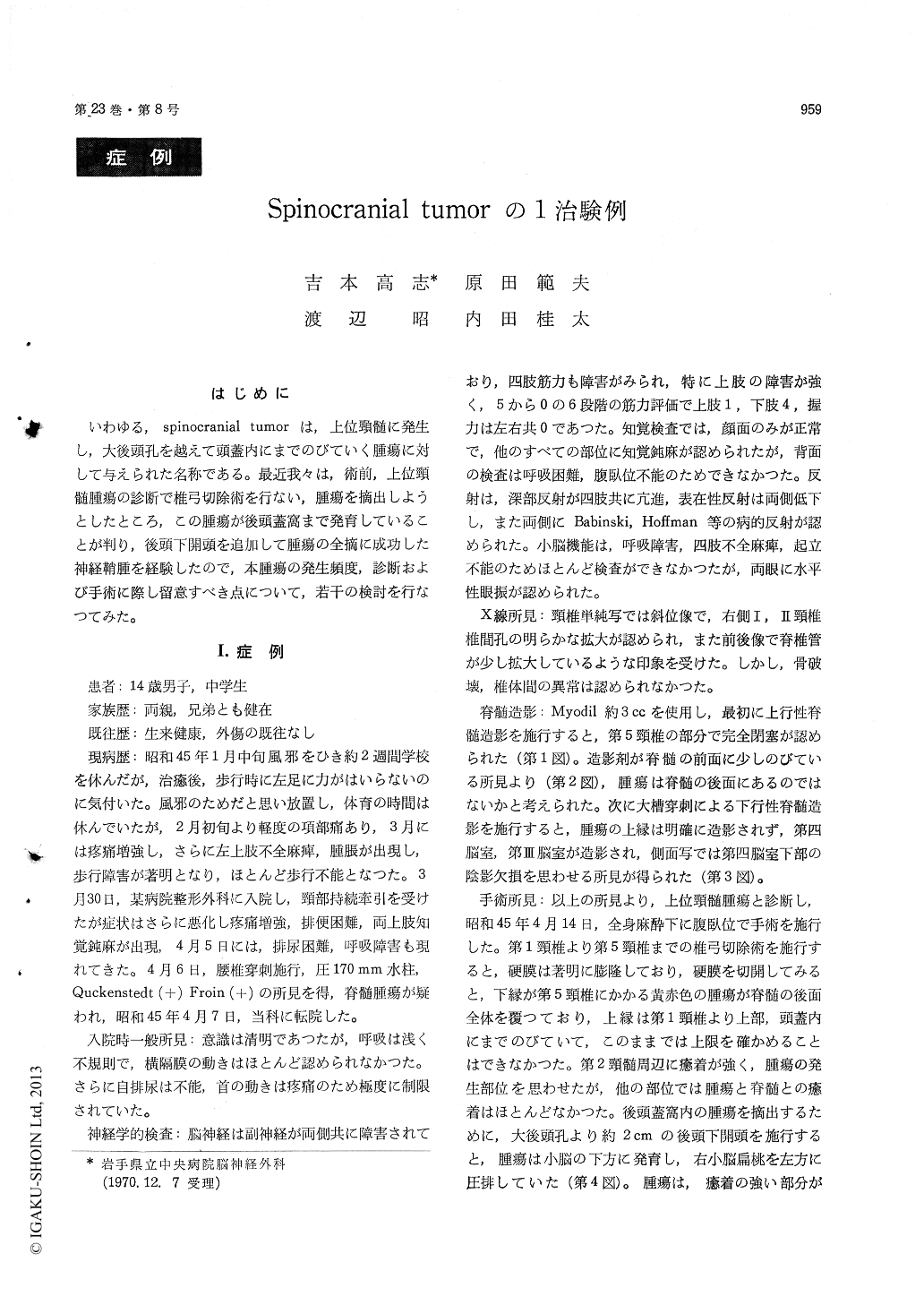Japanese
English
- 有料閲覧
- Abstract 文献概要
- 1ページ目 Look Inside
はじめに
いわゆる,spinocraniai tumorは,上位頸髄に発生し,大後頭孔を越えて頭蓋内にまでのびていく腫瘍に対して与えられた名称である。最近我々は,術前,上位頸髄腫瘍の診断で椎弓切除術を行ない,腫瘍を摘出しようとしたところ,この腫瘍が後頭蓋窩まで発育していることが判り,後頭下開頭を追加して腫瘍の全摘に成功した神経鞘腫を経験したので,本腫瘍の発生頻度,診断および手術に際し留意すべき点について,若干の検討を行なつてみた。
A 14-year-old boy had had difficulty in breath-ing and paresis of four limbs, especially upper limbs, for the last three months prior to his admission to our clinic. Sensory disturbance was revealed all over the body except for the face.
Ascending myelography showed complete block at the level of C5. C1inical diagnosis was tumor of the upper cervical cord. Cervical laminectomy was performed from the C1 to the C5, end exposed a intradural-extramedullary tumor on the posterior surface of the spinal cord, extending into the posterior fossa. The upper border of the tumor was beneath the lower surface of the cerebellum and compressed the cerebellar tonsils to the left. Ad-ding the suboccipital craniotomy, we succeeded in the total extirpation of the tumor. Histological diagnosis was typical neurinoma. Postoperative re-covery was uneventful. Especially, his breathing was improved already during operation. 41 days after operation, he left our hospital walking by himself.
Spinocranial tumor is comparatively rare. Al-though, preoperative precise diagnosis is very dif-ficult only on the base of clinical symptoms and signs, myelography, occasionally ventriculo-graphy, will give useful information on diagnosis. It should be kept in mind that upper cervical cord tumor may extend into the posterior fossa.

Copyright © 1971, Igaku-Shoin Ltd. All rights reserved.


